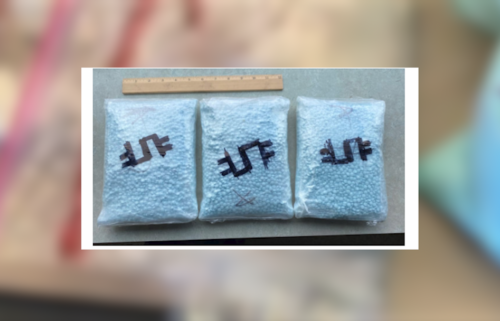‘Love Food, Not Waste’: Bend-La Pine Schools expands food waste composting program

Students at eight Bend schools divert food scraps to compost bins; ninth joins next month
BEND, Ore. (KTVZ) -- Bend-La Pine Schools serves over 11,000 meals daily across the district. And like any food program, that generates considerable food waste.
The district is working to ensure all students know to “Love Food, Not Waste” as we promote efforts to reduce how much food ends up in the trash. Students are helping share this message with a new video featuring young voices from Bear Creek Elementary School, while the district this spring is expanding its school-based food composting program.
Students at eight schools in Bend are diverting their food scraps to compost bins. The food waste is hauled by Cascade Disposal and Republic Services to Knott Landfill’s commercial composting program. Costs associated with expanding this program are funded through the end of the current school year by Deschutes County Solid Waste.
“This is a great way for students to learn how their individual actions can make a difference in their community,” said Jackie Wilson, Sustainability and Energy Specialist for Bend-La Pine Schools.
Cafeteria composting recently began at Pine Ridge Elementary School and Bear Creek Elementary School, and will begin at Ponderosa Elementary School in May. The program already has been in place at six other schools: William E. Miller Elementary School, Juniper Elementary School, Westside Village Magnet School, Amity Creek Magnet School, Mountain View High School and the production kitchen at Bend Senior High School.
“As one of the largest elementary schools in our district, it is exciting to see that this type of waste reduction can be done at a large scale,” said Lisa Birk, Principal of Bear Creek Elementary.
Bear Creek students and staff collaborated with Wilson and the district’s Nutrition Services department to create an educational video and campaign to help train students to Love Food, Not Waste. Students there watched the video as they learned about ways to reduce how much food they toss after each meal. In comparing the weight of cafeteria waste before and after this educational campaign, students saw a 36 percent decrease in food waste.
Student “Green Teams” at several schools have led other efforts to inform their peers about cutting lunchroom waste, including swapping plastic tableware for metal forks and spoons, and stacking paper food bowls to decrease the volume of waste and reduce the use of garbage bags.
Food waste in the U.S. is estimated at 30 to 40 percent of the food supply, according to the U.S Environmental Protection Agency. Food is the single largest category of material placed in municipal landfills, where rotting food emits methane, a powerful greenhouse gas. Municipal solid waste landfills are the third-largest source of human-related methane emissions in the country, the EPA reports.



